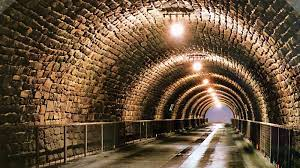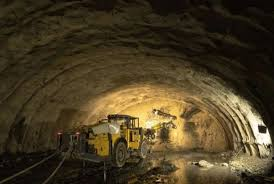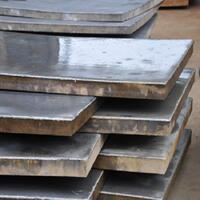To many Indian scholars, however, the near-disaster was a foreseeable outcome as the country’s government officials ignored repeated warnings from scientists trying to carve out Chalda in the Himalayas’ highly unstable geology. Hazards of the large traffic system on the Tomb Road.
Researchers hope the tunnel collapse and the landslides and floods associated with other infrastructure projects will convince the government to reconsider construction practices and intensify the ongoing legal battle against the Chardham Highway project in India’s Supreme Court, Science reports.
Anjal Prakash, an environmental scientist at the Bharti Institute of Public Policy at the Indian School of Business, believes recurring disasters should prompt governments to reassess construction plans and develop preventive measures.
Chardham Highway has caused a lot of controversies since 2016. At the time, the government spent $1.9 billion to upgrade about 900 kilometres of roads, which was the centrepiece of a major tourism and economic development project. The plan calls for widening roads, digging tunnels, building more than 100 bridges, and 3,500 culverts over the rugged terrain. This would require massive blasting, clearing vast swaths of forest, dumping vast amounts of waste, and carving massive roads on steep hillsides. All these activities can trigger rockfalls, landslides and flooding. But legal analysts say the government sidestepped the requirement for a comprehensive environmental assessment by dividing the project into sections less than 100 kilometres long.
However, in 2019, a legal challenge from environmental groups prompted the Supreme Court to appoint a committee headed by renowned environmental scientist Ravi Chopra to review the project’s environmental impact, which was already underway. The panel said in a 2020 report that engineers failed to conduct geological and hydrological analyses of many construction sites in Chardham, leading to landslides and environmental damage. But on a highly contentious issue, the width of sidewalks, the panel issued a divided conclusion. The majority supported a 10-meter-wide pavement, while a minority, led by Chopra, suggested limiting the pavement to 5.5 meters wide to reduce construction risks and environmental damage.

Ultimately, the Supreme Court in 2021 upheld laying 10-meter-wide roads in most parts of the Chardham project. Chopra resigned from the panel in early 2022, saying the experience had “shattered” his belief that the panel “can protect this fragile ecology” and that he suspected building officials would continue to ignore the panel’s technical advice.
Navin Juyal, a former senior geologist at the Indian Physical Research Laboratory, said other infrastructure-related disasters have heightened such concerns. The government has pushed ahead with building hydropower dams and other facilities in glacier-covered valleys more than 2,000 meters high despite warnings from scientists that the areas may be geologically unstable and prone to flooding. In 2021, a glacier burst killed more than 140 workers at India’s Tapovan Vishnugad Hydropower Station.
Concerns about Chardham have grown in recent years, especially after rains triggered landslides that killed people. A study of a 250-kilometre stretch of road in the northern Indian state of Uttarakhand found that after heavy rains in late 2022, landslides were twice as likely to occur on the widened section as on the unwidened section, possibly due to road damage. Cutting, blasting and vegetation removal make slopes more susceptible to collapse.
India’s Ministry of Roads and Highways Transport did not respond to a request for comment. But government officials told Indian media that engineers realized the tunnel crossed a “shear zone” of brittle rock and had experienced numerous smaller rock falls over the past few years. Last week, the Ministry of Environmental Protection appointed an investigation team to investigate the collapse and report on required safety measures by the end of the month. But the Chardham project is nearly 70% complete.
Rajendran doubts the disaster will prompt major changes in the government’s development plans. But he hoped the tunnel collapse would persuade the Supreme Court to impose stricter safety and environmental protection requirements on future construction.
The use of PP fiber in construction
The use of PP fiber in construction
The polypropylene woven geotextile made of polypropylene fibre has excellent properties such as high strength, acid resistance, alkali resistance, antimicrobial resistance, and equal dry and wet strength. It can be used for civil engineering projects built on soft soil foundations (such as dams, reservoirs, highways, etc.), railways, etc.) plays a reinforcing role and distributes the bearing load evenly on the geotextile, causing the roadbed to settle evenly and reducing ground cracks. When building slopes, the use of woven polypropylene geotextile can stabilize the slope, reduce slope collapse, shorten the construction period, and extend the service life of the slope. Composite geotextiles based on woven geotextiles and nonwoven fabrics can be used when carrying larger loads. Polypropylene fibre can be used as a filling material for concrete, mortar, etc., to improve concrete’s impact resistance, waterproofing and heat insulation properties.
Supplier
TRUNNANO is a supplier of PP fiber with over 12 years experience in nano-building energy conservation and nanotechnology development. It accepts payment via Credit Card, T/T, West Union and Paypal. Trunnano will ship the goods to customers overseas through FedEx, DHL, by air, or by sea. If you are looking for high-quality PP fiber, please feel free to contact us and send an inquiry.


